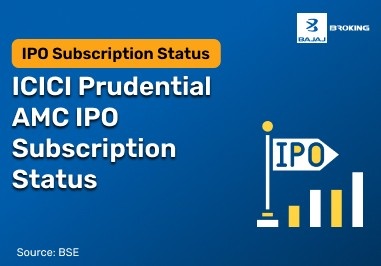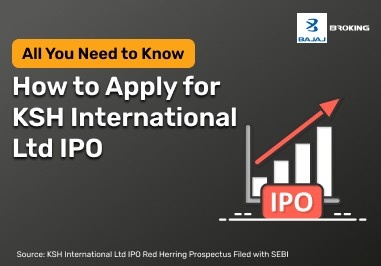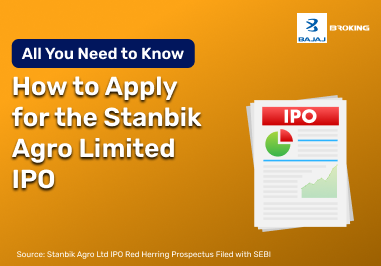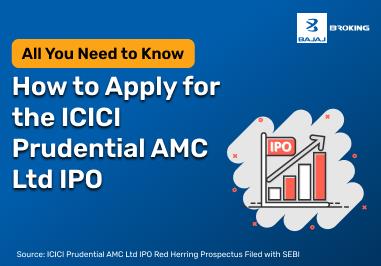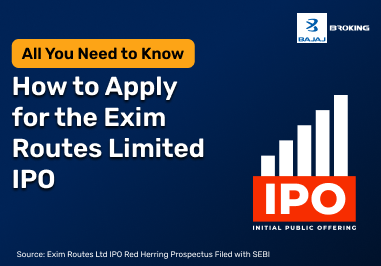Investors looking for low-cost, passive investment strategies often choose between index funds and exchange-traded funds (ETFs). Both are designed to track a specific market index, such as the Nifty 50 or BSE Sensex, providing broad market exposure without active management. While they share similarities, differences in trading, cost, and structure make them suitable for different types of investors. Understanding these differences helps in making informed decisions about where to invest in mutual funds, invest in bonds, or open a demat account for long-term financial growth.
What are Index Funds?
Index funds are a type of mutual fund that aims to replicate the performance of a specific stock market index. Instead of relying on fund managers to select individual stocks, index funds passively track an index like the Nifty 50 price or BSE Sensex. Investors can purchase or redeem units at the end-of-day net asset value (NAV), making them easy to manage for long-term wealth accumulation. These funds are ideal for those looking for a hands-off approach to invest in mutual funds with minimal market monitoring.
What are Exchange-Traded Funds (ETFs)?
ETFs are investment funds that track a specific index, commodity, or sector but trade on stock exchanges like individual stocks. Unlike index funds, ETFs allow investors to buy and sell units throughout the trading day at market prices. Their high liquidity and flexibility make them popular among active traders. Many stock exchanges offer ETF-based derivatives, where futures and options contracts are linked to the performance of an ETF rather than an individual stock or index. These derivatives allow traders to hedge risk, gain leveraged exposure, or speculate on the price movements of ETFs.
Difference between ETF and Index Fund
The main differences between ETFs and index funds are listed in the table below:
Feature
| ETF
| Index Fund
|
Requirement of Demat Account
| Trading in ETFs requires a Demat account. Investors must open a Demat account to trade.
| Investors do not need to open a Demat account to invest in Index Funds.
|
SIP Investment
| Investors cannot invest in ETFs through SIPs.
| Investors can invest in Index Funds through SIPs, ensuring systematic investments.
|
Expense Ratio
| Lower expense ratios compared to Index Funds.
| Higher expense ratios than ETFs due to active fund management.
|
Fund Management
| ETFs offer flexible trading options as they trade like stocks throughout the day.
| Managed by fund managers who adjust holdings based on index composition.
|
Valuation of Funds
| Valuation is done continuously during market hours.
| Valuation is determined at the end of the trading day.
|
Detailed Comparison of ETFs and Index Funds
Understanding the differences between ETFs and Index Funds helps investors choose the right investment based on their financial goals, trading flexibility, and cost considerations. Below is a breakdown of key factors distinguishing the two:
- Trading Flexibility – ETFs trade on stock exchanges like individual stocks, allowing investors to buy and sell throughout the trading day at market prices. Index funds, on the other hand, settle at the Net Asset Value (NAV) at the end of the day, limiting intraday trading opportunities.
- Liquidity and Accessibility – ETFs generally provide higher liquidity due to their presence in stock markets, making them a suitable choice for traders who need quick access to funds. Index funds, while offering diversification, have lower liquidity as transactions are processed only once daily.
- Cost Efficiency – ETFs tend to have lower expense ratios due to passive management, but investors may incur additional costs such as brokerage fees and bid-ask spreads. Index funds, although passively managed, may have slightly higher expense ratios and do not require investors to open a Demat account, reducing costs for long-term investors.
- Investment Strategy – ETFs are ideal for active traders and short-term investors who want flexibility in adjusting their positions throughout the day. Index funds, designed for long-term passive investing, track the market over time with minimal management intervention.
- Portfolio Management – ETFs allow investors to actively manage their holdings, reacting to price movements in real-time. Index funds follow a hands-off approach, with fund managers ensuring the portfolio aligns with the chosen index.
- Tax Efficiency –ETFs are considered more tax-efficient investments because of their structure, which helps reduce capital gains distributions. In contrast, index funds may be subject to capital gains taxes more frequently, particularly those with high turnover rates.
- Minimum Investment Requirements – ETFs provide greater flexibility, as investors can purchase as few as one share. Some index funds have minimum investment requirements, which may be a barrier for smaller investors.
- Dividend Reinvestment – ETFs pay out dividends in cash, requiring manual reinvestment, often with transaction costs. Index funds usually offer automatic dividend reinvestment, allowing for easier compounding growth over time.
Addtional Read: Index Funds Vs Mutual Funds
Similarities between ETF and Index Funds
Despite their differences, ETFs and index funds share several common features that make them attractive to investors. Both follow a passive investing approach, meaning they track an underlying index rather than relying on active stock selection. This strategy allows investors to benefit from market movements without the need for constant management. Additionally, both investment options provide diversification, offering exposure to a broad range of stocks within an index, which helps reduce the risk associated with individual stock fluctuations.
Another key advantage is their cost-effectiveness, as they have lower expense ratios compared to actively managed funds. Since there is no need for frequent buying and selling of securities, management costs remain minimal. Lastly, the market performance of ETFs and index funds closely aligns with their respective indexes, such as the BSE Sensex or Nifty 50, ensuring investors receive returns that mirror overall market trends. These shared characteristics make both ETFs and index funds reliable choices for those seeking long-term, low-cost investment strategies.
ETFs vs. Index Funds: Which One is Better?
The choice between ETFs and Index Funds depends on factors such as investment amount, expense ratio, and trading flexibility. ETFs require investors to buy whole shares, which may lead to a higher initial investment, whereas index funds allow fractional investments with lower minimums, making them more accessible. ETFs generally have lower expense ratios, but investors may incur brokerage fees and bid-ask spreads, while index funds charge slightly higher management fees but have no trading commissions. Trading flexibility is another key difference—ETFs trade throughout the day at market prices, making them ideal for active investors, whereas index funds are transacted at NAV at market close, suiting long-term investors. ETFs offer greater tax efficiency, as their structure reduces capital gains distributions, while index funds may pass on capital gains more frequently. Liquidity is also higher in ETFs due to their exchange-traded nature, allowing for quick adjustments to market changes. Ultimately, the decision should align with an investor’s goals, trading style, and cost considerations.
Do ETFs or Index Funds have better returns?
- Tracking Error: Index funds may have slight tracking errors due to fund management and operational costs.
- Expense Ratios: ETFs often have lower expense ratios, making them more cost-effective in the long run.
- Market Conditions: ETFs allow investors to react to market movements instantly, which can impact returns.
- Tax Efficiency: ETFs may be more tax-efficient due to their trading mechanism.
Are ETFs or Index Funds safer?
Both ETFs and Index Funds are considered relatively safe investment options due to their diversification and passive management approach, but their risk levels depend on market exposure and trading structure. Index funds are generally viewed as more stable because they are not subject to intraday price fluctuations, as they are bought and sold at the Net Asset Value (NAV) at the end of the trading day. This feature reduces the temptation for frequent trading and limits short-term volatility risks. ETFs, on the other hand, trade like stocks, meaning their prices fluctuate throughout the day, making them more susceptible to market swings. However, ETFs can provide better liquidity, allowing investors to exit positions quickly during market downturns. Both investment vehicles are subject to market risk, but index funds may be better suited for passive, long-term investors, while ETFs offer flexibility for those who want more control over entry and exit points. The choice depends on an investor’s risk tolerance and investment strategy.
Where should you invest – ETFs versus Index Funds?
The decision between ETFs and Index Funds depends on investment goals, trading preferences, and cost considerations. ETFs are ideal for investors seeking flexibility, as they trade throughout the day at market prices, allowing for quick portfolio adjustments. They also offer greater liquidity, making them suitable for short-term traders and those who may need access to funds quickly. Index funds, on the other hand, are better suited for long-term investors who prefer a hands-off approach and systematic investing through SIP options. Since index funds are transacted at Net Asset Value (NAV) at market close, they eliminate intraday price fluctuations, reducing emotional trading risks. ETFs generally have lower expense ratios, but brokerage fees may apply, whereas index funds may have slightly higher management costs but often require no trading commissions. Investors should assess their risk tolerance, trading style, and financial objectives before choosing between the two.
Conclusion
Both ETFs and Index Funds offer diversified, low-cost investment options, but the right choice depends on an investor’s financial goals, trading preferences, and risk tolerance. ETFs provide flexibility, allowing investors to buy and sell throughout the day at market prices, making them ideal for those who use a trading account online to actively manage their portfolios. They also offer better liquidity, which can be beneficial during volatile market conditions. On the other hand, index funds are better suited for long-term, passive investors who prefer stability and systematic investments without the need for frequent monitoring. Their structure allows for SIP investments, ensuring disciplined investing over time.
For investors looking to build a well-balanced portfolio, investing in bonds alongside ETFs or index funds can help manage risk and ensure financial stability. Investing in mutual funds also provides an opportunity to diversify across asset classes while benefiting from professional fund management. Whether choosing ETFs for their liquidity or index funds for their simplicity, investors should align their investments with their financial objectives and risk appetite. A combination of these investment options can get returns while ensuring long-term wealth creation.

